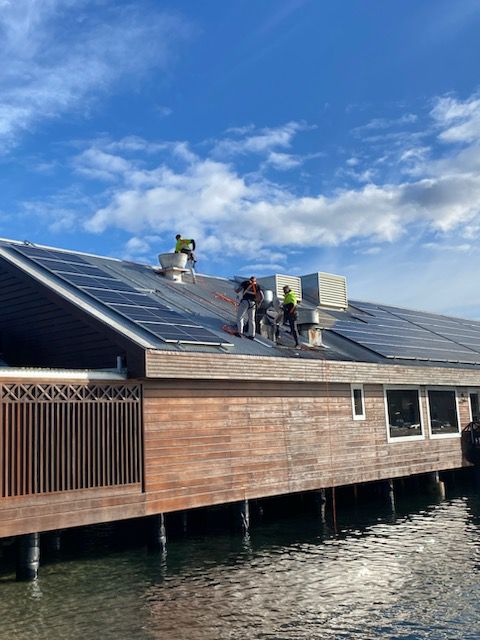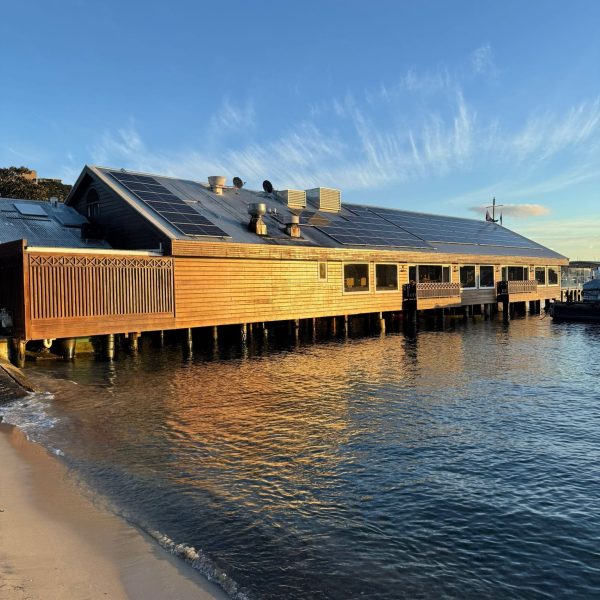The Hidden Cost of Ignoring Roof Repairs Before Solar Panel Installation
Thinking about installing solar panels? Great idea, both for your wallet and the environment! Energy efficient… clean… green… and combined with a battery, can keep you powered at night too.
However, smart investment though it may be, your solar installation also needs to be planned because solar panels are a long-term investment. Good ones last some 25+ years, so popping them on a roof that needs a touch of TLC, or worse still, a major overhaul, isn’t a good idea.
Planning Roof Work? Do It Before You Install Solar Panels
What IS a good idea is spending a bit of time now checking the condition of your roof and tacking any maintenance BEFORE installing those panels. It could save you a lot of hassles, and expense, down the track.
So, what should you be considering in terms of pre-solar roof maintenance?
Does it look a bit washed out, faded, and in need of a lick of paint? What about those repairs or upgrade you’ve been putting off? Now is the perfect time to get them done!
Why Painting Your Roof After Solar Can Be an Expensive Mistake
It’s a common enough thing to think you can get your roof repainted with solar panels installed. The painters can just go around them, right?
Unfortunately, the reality is that unless the paint underneath the panels is in good shape, they’ll probably have to be removed. And reinstalled… That’s expensive, and chances are great to good you’ll also run into various government regulations, even though you’re just reinstalling your system.
NSW Solar Panel Regulations: New Install vs. Reinstall
Requirement | New Install | Reinstall (Same System) | Notes |
|---|---|---|---|
Licensed electrician | ✅ Required | ✅ Required | Applies to all electrical work, including isolation and reconnection. |
Certificate of Compliance (CCEW) | ✅ Required | ✅ Required | Must be issued for both new installs and reinstallation. |
Smart meter upgrade (Type 4/4A) | ✅ Required | ✅ Required if Type 6 meter | Needed before inverter is turned on to avoid billing and export issues. |
Clean Energy Council-accredited installer | ✅ Required | ✅ Only if claiming new rebates | Reinstalling without new rebates doesn’t require CEC accreditation. |
Home Building Compensation cover | ✅ If >$20K | ✅ If total work >$20K | Includes roof + solar work combined. |
Written contract | ✅ If >$5K | ✅ If total work >$5K | Required for consumer protection. |
Grid connection approval | ✅ Required | ✅ Only if system layout/specs change | Reconnection may need approval if inverter or layout is altered. |
Approved product list (CEC) | ✅ Required | ✅ Only if components replaced | Reinstalling same components doesn’t trigger this—replacements do. |
Roof coating cure time | ❌ Not applicable | ✅ Required | Panels must be reinstalled only after coatings fully cure (3–5 days). |
Combine Roof Repairs, Painting, and Solar for Maximum Efficiency and Value
As you can see from the table, installing solar panels before undertaking any necessary roof work is doubling up on many of the associated costs of installing solar panels. Once for the new install, and again for the reinstall…
Why not avoid the expense and get your roof attended to BEFORE the installation. Combine any roof repairs, and painting with the solar installation for maximum efficiency. And minimal hassle.
How Roof Colour and Material Impact Solar Panel Efficiency
Did you know that the colour of your roof, and what it’s made of, can actually impact the efficiency of solar panels? True story!
Heat Retention and Solar Output: What Studies Show
Most of us know that dark colours absorb heat. Light colours reflect them. Roofs are no different; a dark roof will absorb a lot more heat than a light one. While this is fine in very cold climates where roofs should retain heat, it’s not so good for solar panels or our warm temperatures.
Studies in fact show that the hotter the area around the panels is, the warmer the panels get, and the less efficient they are. Conversely, the cooler the panels stay, the more efficient they are.
Solar panels work best when the temperature is around 25°C. Their efficiency drops by 0.3–0.5% for every 1°C above 25°C, depending on the panel’s temperature coefficient. Roof-mounted solar panels are also usually 20–40°C hotter than the surrounding ambient air temperature. So, the cooler you can keep the roof, the cooler (and more efficient) your panels will be.
Interesting point – solar panels operating in 0°C temperatures on a sunny day can actually exceed output capacity!!
Choosing the Right Roof Type for Optimal Solar Performance
But solar panel efficiency doesn’t just depend on roof colour. Roofing material matters, too. Modern metal roofs for example have a reflective coating and, while you might think the radiating heat makes the panels hotter, the reverse is actually true. The heat is reflected away from the roof so it, and the panels, stay cooler. Steel roofs also cool down very quickly, which again increases solar panel efficiency.
Tile roofs on the other hand not only absorb heat (up to 95% of sunlight), they also retain it for longer. So, an uninsulated dark roofing tile is probably your solar panel’s worst enemy, particularly if the panels are mounted very close to the tile surface without adequate airflow.
Painting dark tiles with a lighter reflective coating will considerably improve their thermal properties and solar panel performance.
Why Roof Health Should Be Checked Before Solar Installation
Colour and roofing materials however are just part of the solution. Your roof also needs to be ‘healthy’ or in good repair.
Avoid Damage, Leaks, and Future Costs
Solar panels are a long-term investment, and installing them on a deteriorating roof can compromise the roof itself.
Many houses for instance have timber roof support structures.
Timber can rot if the roof leaks. It’s subject to insect damage like termites if not treated properly. Even with treated timber, a nail hole can still allow insects and borers to get into any untreated areas within the timber via the hole.
Adding the weight of solar panels, particularly a large system, could lead to structural failure. And damage the panels.
Spending money on a thorough roof inspection now, before you install the panels, will avoid expensive mistakes, spot any issues with the roof, and give you the opportunity to repair them now before they get worse.
What to Look For: Cracked Tiles, Rust, and Sagging Structures
But before you call your roof repairer in Sydney, you can check a few things yourself. Look for:
- Cracked or missing tiles
- Rusty metal sheets
- Sagging rafters
Damage to tiles and roofing sheets may have caused damage to underlying roof structures, especially if these are wooden. Sagging rafters indicate deeper issues with the roof structures. If these issues aren’t caught and repaired, they could wind up costing you a small fortune. Fix them now, before they grow into very expensive surprises. And definitely before you add solar panels on top.
Roof Repairs and Solar: Smart Scheduling Saves You Money
Doing your roof repairs when you install solar is smart scheduling.
Trusted Roofing Services Can Help You Plan Ahead
At Efficient Energy Group we often work with vetted roofing professionals who understand how to check and prepare roofs for solar installation. Plan ahead, and make sure your roof is fit for (solar panel) purpose.

See if your postcode is Eligible for the Solar Rebate
Check if your suburb qualifies
Check Your Eligibility Now
Enter your details to check your eligibility.

